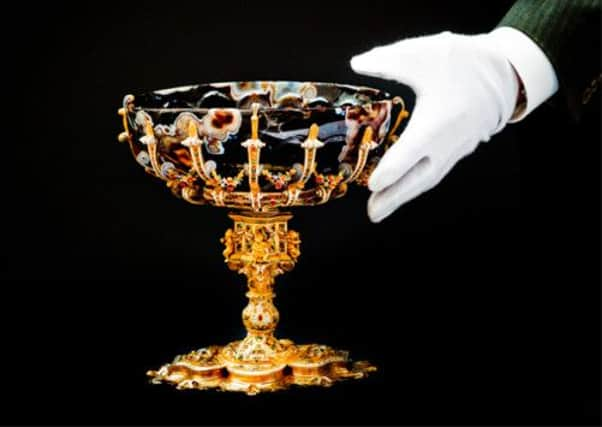Next generation to curate their own exhibitions


National Museums Scotland looks after and develops collections of national and international importance, conserving them for future generations while offering access to as many people as possible in many different ways today.
This happens most obviously in the actual museums, and particularly at the National Museum of Scotland in Edinburgh, which has just celebrated the second anniversary of reopening, following a three-year, £47m redevelopment. In the two years since reopening, the building has welcomed four million visitors and was recently acclaimed the best museum in Britain by the users of TripAdvisor. Work will begin next year on another ten new galleries devoted to Science and Technology and Art and Design.
Advertisement
Hide AdAdvertisement
Hide AdPerhaps less well known is the work done by National Museums Scotland to promote access and engagement with these collections across the country, with a variety of projects, loans and partnership activities taking place on a regular basis. Viking treasures from the Skaill Hoard are currently on display at the Shetland Museum, and the latest results of another project, Scotland Creates, are about to be on show at the McLean Museum and Art Gallery in Greenock.
Promoting youth engagement
Through the Scotland Creates project, young people are curating their own exhibitions inspired by the collections of National Museums Scotland and those of their respective local museums. Supported by the Esmée Fairbairn Foundation and Creative Scotland, Scotland Creates promotes youth engagement by giving young people the platform to curate their own exhibitions that reach out to an audience of their peers, with the support and guidance of museum professionals.
The four partner museums are: the Dick Institute, Kilmarnock; Museum nan Eilean Sgoil Lionacleit, Benbecula; the McLean Museum and Art Gallery, Greenock and The McManus, Dundee’s Museum & Art Gallery. Creativity runs throughout the project and each of the exhibitions is supported by a programme of events. Scottish Ballet, the National Theatre of Scotland, Live Music Now Scotland, local artists and arts organisations have been commissioned to create new works with the young people.
The four individual projects share the theme of a sense of place, exploring the idea of what Scotland creates, and has created, through the arts, science and technology.
From 10 August until 21 September, the McLean Museum and Art Gallery showcases pieces from the Clyde Pottery Company. The participants have selected items from National Museums Scotland to add to the McLean’s own fantastic collections to tell the story of this once-thriving local industry.
At the Dick Institute, “Legacy of Lace” is a fresh take on Ayrshire’s industrial heritage. Thriving local company MYB Textiles continues to produce exquisite lace for the international market and its story is told through film and samples of lace-work. Textiles, lace and shoes from the national collections are also on show together with contemporary works by Crikey Aphrodite, Strumpet & Pink, Minna Hepburn and Ebba Goring.
In the Western Isles, A Reir na h-Aimsir (Without Rain there would not be Magic) explores how weather affects the “sense of place”. The participants chose to mix their own photos of the ever-changing landscape with weather instruments from National Museum collections and a fantastic Harris Tweed suit, designed by Vivienne Westwood. Young musicians from Barra, Benbecula and North and South Uist worked with Tiree band Skerryvore to compose a new piece of music, inspired by the weather. The exhibition is at Museum nan Eilean Sgoil Lionacleit, on Benbecula until 28 September.
In Dundee, young digital journalists are investigating 19th century local businesses, George Lowdon and Peter Airth Feathers & Sons. Microscopes, telescopes and nautical instruments made and sold by these local businesses will go on show in The McManus in December. A city trail is also being produced to show how Dundee’s city centre has changed over the past 100 years.
Advertisement
Hide AdAdvertisement
Hide AdFinally, Edinburgh’s place in scientific innovation will be celebrated at the National Museum of Scotland. Short animated films tell the story of the world’s first cloned animal – Dolly the Sheep – and bring it up to date with the latest research from the Roslin Institute.
Also featured are Edinburgh-born physicist James Clerk Maxwell’s dynamic top, with three colour sectors or disks, devised for the study of gyroscopic motion and colour, which contributed to the development of colour photography, and the world’s first bionic arm, pioneered by the Southeast Mobility and Rehabilitation Technology (SMART) Centre, Edinburgh.
The final films will be showing in the Science & Technology galleries at the National Museum of Scotland from 28 November until the end of January 2014.
• Christine McLean is community engagement manager at National Museums Scotland